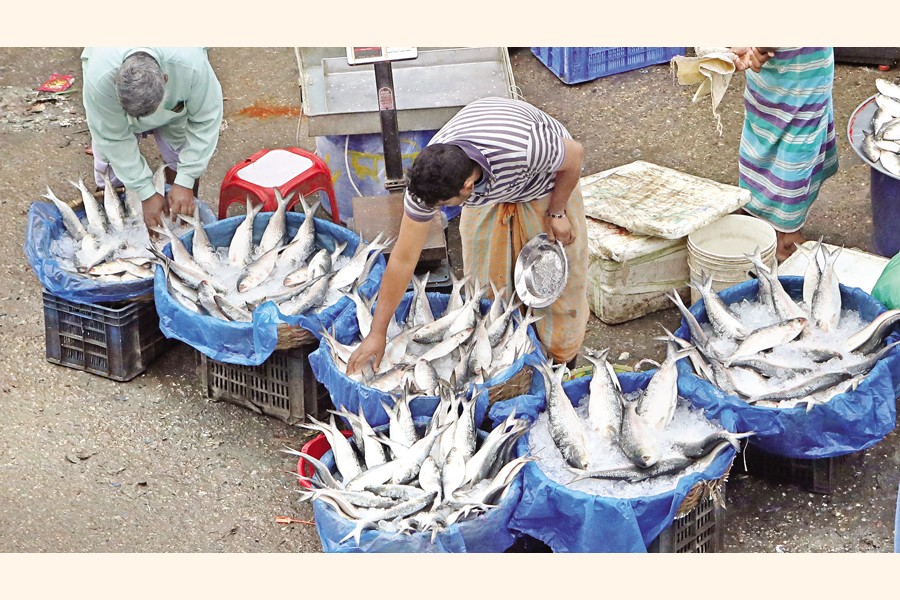
Published :
Updated :

The prices of hilsa have soared to a record high despite a notable increase in supply over the past week.
Prices currently range between Tk 1,400 and Tk 3,000 a kilogramme, depending on size. Traders attribute the surge mainly to higher fishing costs and strong consumer demand.
At present, a 500-gramme river hilsa sells for at least Tk 1,400 a kg, medium-sized hilsa (around 800 gramme) costs nearly Tk 1,800 a kg, while large hilsa weighing over 1.0 kg is priced at Tk 2,800-Tk 3,000 a kg. Baby hilsa, known as jatka, is selling for around Tk 1,000 a kg in different markets.
Traders say that the hilsa season has just begun, with availability showing slight improvement.
Kamal Hossain, a fish vendor at Mohammadpur Krishi Market, said prices remain high this season despite an increase in supply compared to the last week. The price difference comes from the source, he said, adding that hilsa from Chattogram is cheaper, but Padma hilsa costs more. He said the supply will rise further in the coming weeks as river water levels increase and more hilsa are caught at sea.
Md Shabe Barat, secretary of the Chandpur Fish Traders' Cooperative, said hilsa prices started climbing steeply from 2022 after the government raised diesel prices by more than 50 per cent. This year, he said, the cost has increased further, which is also contributing to the price hike.
According to the Department of Agricultural Marketing, current hilsa prices are 25-30 per cent higher than the same period last year.
SM Nazer Hossain, Vice-President of the Consumers Association of Bangladesh (CAB), said both low- and middle-income consumers are now hesitant to buy hilsa. "Hilsa has become a fish only for the rich, which is unfair. The government has spent a lot of money on hilsa conservation, but the poor are not benefiting at all." He urges the government to ensure a fair price so that every household can afford to consume the national fish.
According to the Ministry of Fisheries and Livestock, Bangladesh produces about 0.5 million tonnes of hilsa annually, accounting for 11 per cent of the country's total fish production.
tonmoy.wardad@gmail.com


 For all latest news, follow The Financial Express Google News channel.
For all latest news, follow The Financial Express Google News channel.